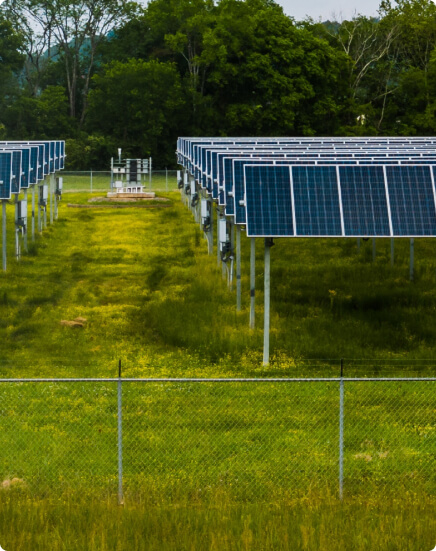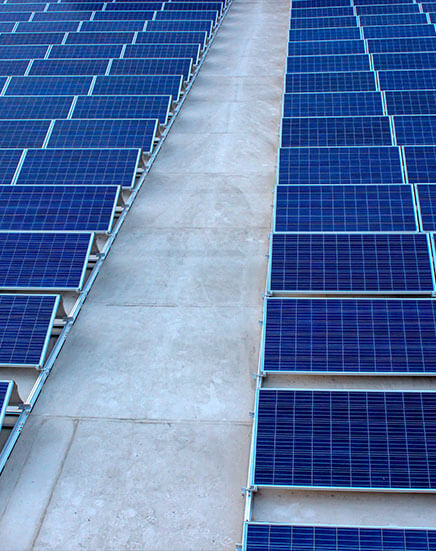
Yearly Catch-Up: Solar Industry Trends 2021
Date: April 15th 2021By: Jeff Cardello
2020 created unprecedented changes for both our professional and personal lives. As COVID-19 disrupted economic activity, we faced challenges in adapting to our “new normal” environment.
The sudden lockdown increased overheads for start-ups and industry veterans alike. Precious time was lost, projects were put on hold and tenders were delayed. The pandemic created a vacuum, one that helped spark creativity, boost technological growth and digitize industries on a massive scale. We had to find cost-effective and sustainable energy solutions to ease every company’s transition to an energy-efficient business model.
Over the next decade, the solar industry is predicted to gain a significant chunk of the energy market. BHow do we get there? For a better understanding of where we’re headed, take a look at some of the top global solar trends in 2021 and their impact.
Increased Accessibility
Solar power systems available today are highly efficient and technologically sound; you need fewer modules to meet your energy needs. Far more solar PV is being manufactured than ever before, significantly lowering the costs. Also, convenience is key; when you start streamlining solar project development and operations, people choose renewable energy.
Artificial Intelligence and Digitization
We can expect to see the industry go through a transformation at all levels of solar project development, digitizing everything from production to end-user controls. For example, the renewable energy industry currently relies on robots and drones for inspections, which help companies maintain safety standards as they provide sustainable power. An immense amount of human effort and time goes into ensuring things run well. Machine learning is an upcoming game changer for the solar industry, such as the use of AI in identifying and tracking energy consumption.
Climate Change
As we prepare the renewable energy industry for expansion, there’s a considerable amount of long-term investment required to ensure that climate change does not slow down the pace at which the industry grows. Climate change will impact where solar companies purchase sites, their long-term energy output or financial calculations.
Blockchain
Blockchain allows you to facilitate and record energy transactions. 2021 will see a rise in the development of blockchain products that work with technology that is accessible within the current regulatory environment. This will potentially help customers save precious energy by reducing the cost of transaction, facilitating automation and even generating new revenue for distributed energy technologies.
Grid Parity
There’s no denying that renewable energy sources can generate electricity at a similar or equal rate to traditional sources such as coal and gas but don’t carry the same carbon footprint. Renewable energy requires no added investments and can be purchased at a lesser or equal rate when compared to energy generated from traditional sources. Above all, it saves the environment from tons of carbon dioxide (CO2), which is a major contributor to global warming.
Renewable energy is what will redefine how we power our lives and how intelligently we consume that power. 2021 will witness a series of developments that could change the pace at which this industry grows for years to come, like integrated software that caters to all phases of a solar project while automating functions that would otherwise eat away most of your time.
Experience the advantages of adapting to the best technology available with Solar Informatics.
Yearly Catch-Up: Solar Industry Trends 2021
Date: April 15th 2021By: Jeff Cardello
2020 came around with no holds barred, creating unprecedented changes for both our professional and personal lives. As COVID-19 disrupted economic activity, we faced challenges in adapting to our rapidly changing environment.
The sudden lockdown increased overheads for start-ups and giants alike, precious time was lost, projects were put on hold and tenders were delayed. The pandemic created a vacuum, one that helped spark creativity, boost technological growth and digitize industries on a massive scale. We had to find cost effective and sustainable energy solutions, which would go an extra mile in easing every company’s transition to an energy-efficient business model.
By 2030, the solar industry is predicted to gain a significant chunk of the market, but how do we get there? For a better understanding of where we’re headed, take a look at some of the top global solar trends in 2021 and their impact.

Increased Accessibility
Solar power systems available today are highly efficient and technologically sound; you need fewer panels to meet your energy needs. Far more solar panels are being manufactured today than ever before, significantly lowering the costs. The thing to focus on is the fact that for every consumer in the world, convenience is key; when you start making it convenient for people to choose renewable energy, they adapt quite well.
Artificial Intelligence and Digitization
We can expect to see the industry go through a transformation at all levels of the solar power system, digitizing everything from production to end-user controls. The renewable energy industry currently relies on robots and drones for inspections, which help companies maintain safety standards as they provide sustainable power. An immense amount of human effort and time goes into ensuring things run well. Machine learning is an upcoming game changer for the solar industry as well, like micro-grid controllers and the use of AI in identifying and tracking energy consumption.
Climate Change
As we prepare the renewable energy industry for expansion, there’s a considerable amount of long-term investment that would be required to ensure that climate change does not slow down the pace at which the industry grows. Climate change will impact where solar companies purchase sites, what would be their long-term energy output or financial calculations, but we know it has very little impact on the general temporal trends in annual solar or wind power generation.
Blockchain
Blockchain allows you to facilitate and record energy transactions. The year 2021 will see a rise in the development of blockchain products that work with technology that is accessible within the current regulatory environment. This will potentially help customers save precious energy by reducing the cost of transaction, facilitating automation and even generating new revenue for distributed energy technologies.
Grid Parity
There’s no denying that renewable energy sources can generate electricity at a similar or equal rate to traditional sources, like coal and gas, but don’t carry the same carbon footprint. Renewable energy requires no added investments and can be purchased at a lesser or equal rate when compared to energy generated from traditional sources. Above all, it saves the environment from tonnes of carbon dioxide (CO2), which is a major contributor to global warming.
Renewable energy is what will redefine how we power our lives and how intelligently we consume that power. 2021 will witness a series of developments that could change the pace at which this industry grows for years to come, like integrated software that caters to all phases of a solar project while automating functions that would otherwise eat away most of your time.
Experience the advantages of adapting to the best technology available with Solar Informatics.
Get in touch with our solar experts today.




